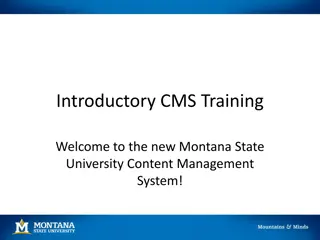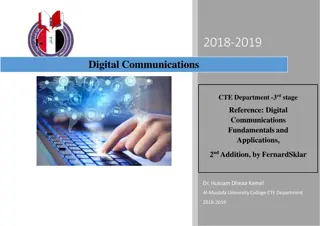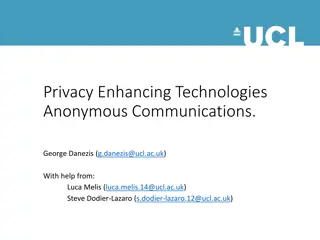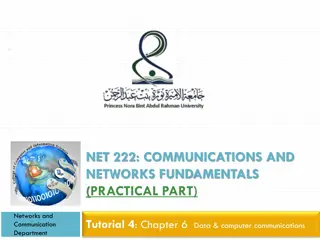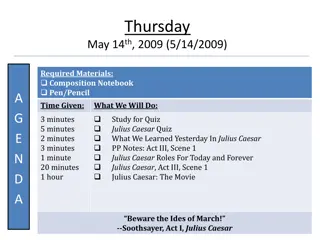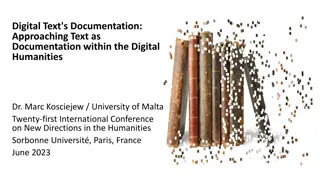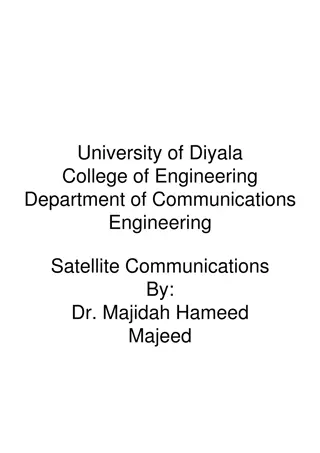Digital Communications Concepts Presented by Dr. Julius Butime
In this digital communications overview, Dr. Julius Butime delves into concepts such as digitization of voice, the digital hierarchy, modulation schemes like PCM, and differences in standards like bits, bytes, and more. Learn about transmission techniques and the aim of communications in efficiently delivering information. Explore the world of digital audio representation and modulation schemes for various applications.
Download Presentation

Please find below an Image/Link to download the presentation.
The content on the website is provided AS IS for your information and personal use only. It may not be sold, licensed, or shared on other websites without obtaining consent from the author.If you encounter any issues during the download, it is possible that the publisher has removed the file from their server.
You are allowed to download the files provided on this website for personal or commercial use, subject to the condition that they are used lawfully. All files are the property of their respective owners.
The content on the website is provided AS IS for your information and personal use only. It may not be sold, licensed, or shared on other websites without obtaining consent from the author.
E N D
Presentation Transcript
Digital Communications Concepts Presented by Dr. Julius Butime Head Engineering Training AFRALTI AFRALTI 1
Outline Digitization of Voice The Digital Hierarchy EI E2 Carrier Systems Synchronous Digital Hierarchy (SDH) AFRALTI 2
Digitization of Voice AFRALTI 3
Digitization of voice AFRALTI 4
Digitization of images AFRALTI 5
Differences in standards Entropy Bits Bytes Kilobytes Megabytes Gigabytes Terrabytes MP3, MP4,MPEG, WMA, HDMI, JPEG, TIFF, RAW, AFRALTI 6
The Digital Hierarchy EI E2 Carrier Systems The aim of communications has been to transmit more information over the same infrastructure This involves gathering services together, transmitting them together, then separating them for distribution to the individual receivers AFRALTI 7
Modulation Schemes Frequency-division multiplexing (FDM) is a scheme in which numerous signals are combined for transmission on a single communications line or channel. Each signal is assigned a different frequency (subchannel) within the main channel. AFRALTI 8
Modulation schemes AFRALTI 9
Modulation Schemes Pulse-code modulation (PCM) is a method used to digitally represent sampled analog signals. It is the standard form of digital audio in computers,Compact Discs,digital telephony and other digital audio applications. AFRALTI 10
In a PCM stream, the amplitude of the analog signal is sampled regularly at uniform intervals, and each sample is quantized to the nearest value within a range of digital steps. AFRALTI 11
Time Division Multiplexing is a method of transmitting and receiving independent signals over a common signal path by means of synchronized switches at each end of the transmission line so that each signal appears on the line only a fraction of time in an alternating pattern. AFRALTI 12
Time Division Multiplexing This form of signal multiplexing was developed in telecommunications for telegraphy syst ems in the late 19th century, but found its most common application in digital telephony in the second half of the 20th century. AFRALTI 13
Plesiochronous Digital Hierarchy (PDH) E1 ITU T G702 The basic primary multiplexer 2.048Mb/s trunks were joined together by adding bits (bit stuffing) which synchronised the trunks at each level of the PDH. 2.048Mb/s was called E1 and the hierarchy is based on multiples of 4 E1s. AFRALTI 14
Plesiochronous Digital Hierarchy (PDH) E1 ITU T G702 E2, 4 x E1 - 8Mb/s E3, 4 x E2 - 34Mb/s E4, 4 x E3 - 140Mb/s E5, 4 x E4 - 565Mb/s AFRALTI 15
PDH AFRALTI 16
Synchronous Digital Hierarchy (SDH) Management is very inflexible in PDH, so SDH was developed. Synchronous Digital Hierarchy (SDH) originates from Synchronous Optical Network (SONET) in the US. It includes capabilities for bandwidth on demand and is also made up of multiples of E1. STM-1 (155Mb/s) is 63 x E1, STM-4 (622Mb/s) is 4 x STM-1 and STM-16 (2.5Gb/s) is 4 x STM-4. AFRALTI 17
The benefits of SDH are: Different interfaces or different bandwidths can connect (G708, G781). Network topologies are more flexible. There is flexibility for growth. The optical interface is standard (G957). Network Management is easier to perform (G774 and G784). AFRALTI 18
AFRALTI 19
Way forward AFRALTI 20









